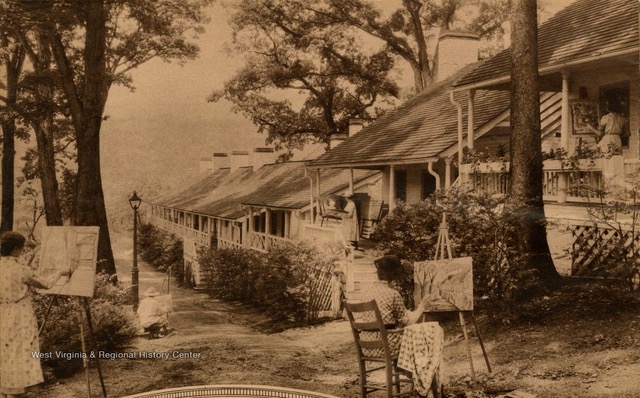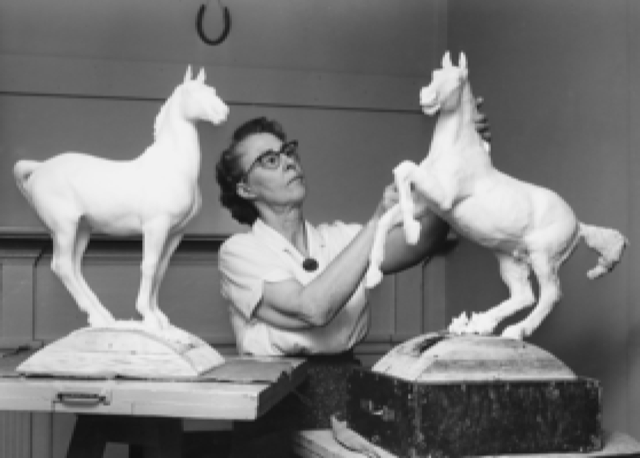For many years the name Gladys Tuke was, essentially, synonymous with the Art Colony at The Greenbrier. She was born in 1899 in Linwood, Pocahontas County, and lived there on a farm until her family moved to another farm, “Westward Ho,” on the Big Draft Road near White Sulphur Springs. She studied at the Corcoran School of Art in Washington, DC, and under the sculptor Albert Laessle at the Pennsylvania Academy of Fine Arts in Philadelphia. By 1937, she had been studying with Laessle for three years and was teaching at a YWCA in Philadelphia. Laessle was known for his animal sculptures and Tuke developed a specialty in sculpting horses. (She was an accomplished horsewoman. Her uncle, Cecil Tuke, was a horse breeder in Hot Springs, VA, and riding master at The Greenbrier).
 It is unclear as to when Tuke joined the Art Colony, but it was shut down when The Greenbrier was converted to the Ashford General Hospital during World War II. At the hospital, she was engaged as the director of the Arts and Skills Corps and taught sculpting to patients as a therapy program. During the time the Art Colony was closed, Tuke had a private studio over a bowling alley in White Sulphur Springs.
It is unclear as to when Tuke joined the Art Colony, but it was shut down when The Greenbrier was converted to the Ashford General Hospital during World War II. At the hospital, she was engaged as the director of the Arts and Skills Corps and taught sculpting to patients as a therapy program. During the time the Art Colony was closed, Tuke had a private studio over a bowling alley in White Sulphur Springs.
The Art Colony was revived in 1956 by Tuke and Jeanne Coyne who was an art instructor at Greenbrier College for Women. Tuke studied pottery at The Greenbrier under Charles Tennant and sold pottery in addition to sculpture. Esther Wilson joined her in the 1960s as an assistant in her pottery production. Tuke’s sculpture was exhibited at the Corcoran Gallery, Cincinnati Art Museum, and Philadelphia’s Woodmere Gallery. From time to time, her sculpture and pottery will show up for sale at art auction houses.
Tuke was uncommonly generous in taking time to demonstrate her skill as a sculptor and potter at civic clubs in Greenbrier, Summers and Raleigh Counties. She was active in St. Thomas Episcopal Church and the Greenbrier Humane Society. She died in 1982 at Denmar State Hospital.
Photos courtesy of West Virginia Public Broadcasting and the West Virginia University Regional History Center.
Sources: Beckley Post-Herald, Charleston Daily Mail, The Independent Herald, and The History of The Greenbrier America’s Resort by Robert S. Conte.



